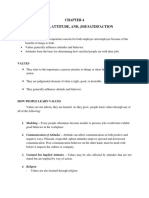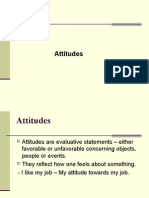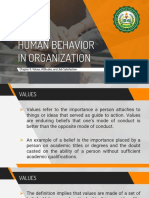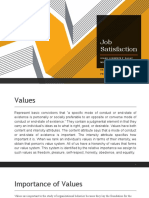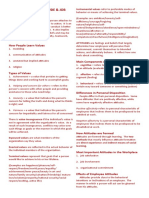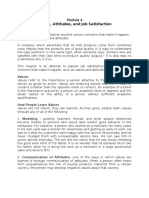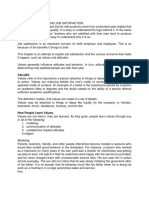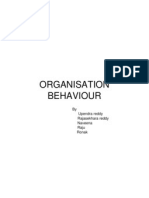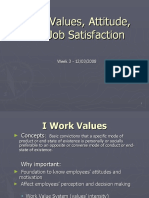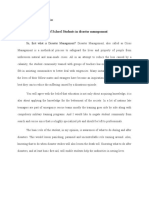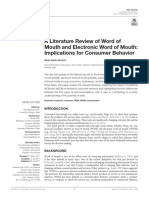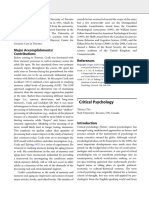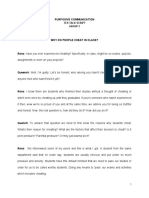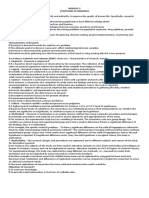0% found this document useful (0 votes)
273 views10 pagesChapter 4: Values, Attitudes, and Job Satisfaction
The document discusses values, attitudes, and job satisfaction. It defines values as beliefs that guide actions, and explains that values are learned through modeling, communication, religion, and other means. Attitudes are feelings and beliefs that influence behavior and job satisfaction, which refers to positive or negative feelings about one's job based on an evaluation of its characteristics.
Uploaded by
Shy CabuenasCopyright
© © All Rights Reserved
We take content rights seriously. If you suspect this is your content, claim it here.
Available Formats
Download as DOCX, PDF, TXT or read online on Scribd
0% found this document useful (0 votes)
273 views10 pagesChapter 4: Values, Attitudes, and Job Satisfaction
The document discusses values, attitudes, and job satisfaction. It defines values as beliefs that guide actions, and explains that values are learned through modeling, communication, religion, and other means. Attitudes are feelings and beliefs that influence behavior and job satisfaction, which refers to positive or negative feelings about one's job based on an evaluation of its characteristics.
Uploaded by
Shy CabuenasCopyright
© © All Rights Reserved
We take content rights seriously. If you suspect this is your content, claim it here.
Available Formats
Download as DOCX, PDF, TXT or read online on Scribd
/ 10
